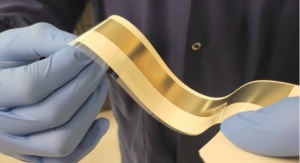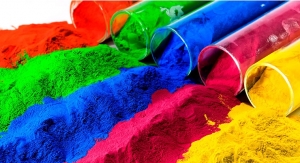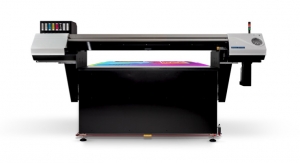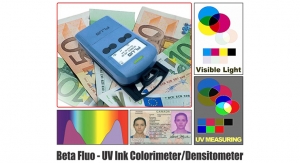David Savastano, Ink World Editor10.09.09
Any ink maker can tell you how a certain test is performed. Testing for color? Use a spectrophotometer. Testing for viscosity? Use a viscometer. And so on.
Every ink maker also knows why these tests are performed. If an ink doesn’t perform the way it’s supposed to, it won’t last very long in the marketplace. With the multitude of products and companies out there, a customer will gladly go to a competitor for ink if they can get a more reliable product. If the life of the product and the reputation of the company are at all important to the ink chemist, then testing is important too.
This general answer to the question, “why do we test?” is a serviceable answer, but there is certainly more to be said. What does one look at when testing certain aspects of an ink, such as color, viscosity and rub? What do the results mean? Questions like these deserve a deeper look.
Put simply, viscosity is a measure of the thickness of an ink on a press. Measuring viscosity is important because knowing how quickly and easily the ink will flow will help determine how the ink performs on the press, and at what speeds the press will be able to operate at while using a particular ink.
Looking at viscosity is not as straight forward as the simple explanation above might suggest, though. A number of factors can affect the viscosity of an ink, meaning that one measurement of viscosity is an insufficient analysis, according to Lisa Hahn, president of Flexo Tech.
“One of the things I lecture about is looking at viscosity curves, rather than single point values,” said Ms. Hahn. “The reason for that is that ink will behave differently when it’s subjected to different amounts of shear stress. Ink, when it travels through a press, goes through a number of shear forces. These forces are different in magnitude. The ink will become more or less viscous depending on the shear force that’s imposed on it. When you are testing this ink, a particular shear level will give you a number. But that number may not have anything to do with the business end of the press.”
Inks that maintain viscosity at higher shear rates, such as those imposed by a printing press, are considered to be more stable than others. Knowledge of the stability of an ink over a range of shear rates will help the printer to determine if the ink chosen for the job is up to the task.
According to Ms. Hahn, there are a few different methods to test viscosity. For offset inks, a falling rod viscometer is a solid test method that will allow for measurements at several points.
An unreliable viscosity testing device, according to Ms. Hahn, is the efflux cup. Testing using an efflux cup involves little more than dipping a cup into a liquid ink and then measuring the time it takes the ink to run out an orifice in the bottom of the cup.
“It’s not a very sophisticated test at all,” said Ms. Hahn. “You have many variables, such as the speed of the person working the timer, and that measures only the shear stress imposed by gravity.
“In looking at the viscosity of two inks, you could have two inks that have the same shear rate imposed by an efflux cup, could give the same number of seconds, but on a press, you might see they have different color densities,” she added. “And if you go back and test them on a Brookfield viscometer, you might find a range of different numbers at different shear rates. At a higher shear rate range the inks may behave quite differently. Viscosity of one may drop off at a higher shear rate. Taking a number of viscosity readings can be indicative of this behavior.”
Shear stress is not the only factor that can affect the viscosity and stability of an ink. Age is another factor. “When you combine all the ingredients, the initial starting viscosity of the ingredients doesn’t necessarily dictate the final viscosity of the ink or how it will change over time,” said Ms. Hahn. “There is a lot of interaction going on when you formulate an ink and put these ingredients together and it can change the rheological form of the ink.” Testing the viscosity of an ink over a period of time is also an important task.
Heat can also wreak havoc on an unstable ink. Before an ink is put to press it is likely that it will undergo a variety of temperature changes.
“A good test would be to put the ink in the oven at 50˚C and see how it reacts after being heated, as it would in the back of a rail car or truck in transport and see how the viscosity changes,” said Ms. Hahn.
Color is a very subjective quality, perhaps the most subjective aspect of an ink. Obtaining a specific color ink is not as simple as asking for a blue or green. There are a number of different shades and variables involved that can affect the overall appearance of the ink.
“Blue is not blue is not blue,” said Ms. Hahn. “I may have a blue that’s somewhat chlorinated so that it has a green shade. But a blue from Company A may not have the same shade of green tint as the one from Company B. While they may have the same degree of blueness the undertone will not be the same.
“Choosing colors can’t be arbitrary,” she added. “They must have certain color values in and above the basic shade of the pigment. And so we look at the different shades inherent in the pigment. For example a blue can have a red or green undertone. You have to look at the different undertones for a given hue or mass tone of a pigment. And it becomes important if a printer asks for a color to be sure that we match it not just in mass tone but also in undertone.”
Testing for color is typically performed using a spectrophotometer.
“A spectrophotometer can measure very small color differences,” said Walt Zawacki, senior scientist at Flint Ink Corporation. “Color measuring instruments (spectrophotometers) are used to measure samples prepared during various test methods.
There are a number of reasons to test for color. “Some of the most common reasons are conformance, communication and consistency,” said Mr. Zawacki. “We may want to check an ink’s conformance to a standard (such as ISO 2846-1) or industry specification (such as SWOP). We may then want to communicate those results to others within our organization or to the customer. We want to do this accurately and consistently. If the measurements are made and reported in accordance with ANSI CGATS.5 (same as ISO 13655), then we should be successful.”
Interestingly, though the spectrophotometer is a necessary tool, it does not measure up to the human eye in terms of ability to discern color. That means even the spectrophotometer can be wrong and colors may not match, though the spectrophotometer says they should.
“No matter how good the spectrophotometer, it’s not as good as the human eye,” said Ms. Hahn.” It’s a mere approximation. The spectrophotometer is less sensitive. There’s a lot of reliance on the instrument, a lot of dependence on numerical value, but they sometimes forget to look at what it looks like to the naked eye.”
Though the spectrophotometer is imperfect, it’s still necessary, according to Ms. Hahn. The numerical value provided by the spectrophotometer is the only means to explain to another person exactly how the color should look.
“I look around my office and I see all these colors, greens and reds, etc.,and I know exactly how they look, but I have no way to explain that to you,” said Ms. Hahn. “The only way we aren’t skewed by the visual ability or age of people is to quantify it (with a spectrophotometer). Five ink chemists might all see it differently and not be able to agree that it’s a match. The only thing we can do is remove the variables, remove age and degree of vision and have a calibrated instrument do it.
“But there is a fallacy in that because it isn’t instruments buying printing, it’s people,” she added. “No test is perfect, but you’ve got to have a standard. It’s sort of the best we can do.”
Rub resistance, on the other hand, is much easier to quantify than color. “It’s much more tangible than color,” said Ms. Hahn. Measuring rub resistance, quite simply, is a means of determining how easily the ink the will smear or come off a substrate and attach itself to objects that come into contact with the surface, much the way newspaper print gets all over a person’s hands while reading the paper.
There are some issues with rub that need to be addressed. Rub can be tested in many ways, some more sophisticated than others. The Sutherland test and the comprehensive abrasion tester (CAT) are two widely used methods. “Some printers just take a piece of unprinted substrate and rub it over the printed surface to see if anything comes off, so it can be pretty simple or more complex than that,” said Ms. Hahn.
Interestingly, there isn’t any standard test for rub. “The subjectivity comes in how one measures it.Everyone is sort of a renegade in how they test it,” said Ms Hahn. “There really isn’t any standardized test for it. There are some things that must be considered that no one ever does. If you take a standard four-pound block and put it on a Sutherland arm, you eventually start eating the surface because of the friction. You can get a lot of things to happen when you heat up the ink surface due to friction.”
All of this is tangentially related to coefficient of friction (CoF), said Ms. Hahn.
“Obviously the less friction there is, the slower something heats. The wax people have a holy grail in mind: a wax that creates a high CoF while having good rub resistance. They want high friction and no rub, because they are aware of the effects of friction heating and rub resistance.”
The two elements to this goal are rather contradictory to each other, said Rich Bradley, president, Carroll Scientific. A high CoF, he said, means there is a lot of grip, which, in turn, means that the ink would have to be extremely tough in order to have good abrasion resistance. But, tough very often means hard, which, by design, tends to be slippery, Mr. Bradley said.
“What you normally end up doing, because you’re trying to balance the abrasion resistance with the slip, is trying to use different types of polymers that don’t necessarily reduce the CoF as much as some other polymers,” Mr. Bradley said. “So it’s very difficult to take a wax-free ink and raise its CoF. That’s a very hard thing to do.”
Most of the time, said Mr. Bradley, ink makers have a targeted CoF that they are looking to reach, which is dependent on the type surface the ink will be applied to. Finding the right CoF for the job is the reason for testing this aspect of an ink.
A high CoF is most often associated with the packaging side of the ink industry, said Mr. Bradley. “You’re looking at boxes or packages that may be running down a conveyor or stacked in a grocery store, and you don’t want them to be so slippery that a slight nudge would send the whole pile crashing down,” Mr. Bradley said. “And you want to make sure that things will run up conveyors in processing plants.”
A low CoF is a trait more sought after when dealing with high speed printing. “On the other end of the spectrum, you want very low CoF when you are dealing with things like high speed web presses where you have paper at the end of the press running at a very high rate, like 3000 feet per minute, crossing folder bars, chill rollers, where there is friction and you want to reduce the grip of the paper on any of those stationary objects,” he said.
“In some cases, having the right CoFcan be critical,” Mr. Bradley added. “In a packaging application, the non-skid properties might be just as important as the abrasion resistance. If it won’t run on the conveyor, it’s no good to the printer.”
Testing inks is important for many reasons. Results from testing can indicate how an ink will perform, both on press and after printing, and how it will look. This knowledge is the tool to help the printer decide what ink is best suited for their needs. If these test results are not provided or are incorrect, the ink maker is likely to find their customers lining up to do business with the competition.
Every ink maker also knows why these tests are performed. If an ink doesn’t perform the way it’s supposed to, it won’t last very long in the marketplace. With the multitude of products and companies out there, a customer will gladly go to a competitor for ink if they can get a more reliable product. If the life of the product and the reputation of the company are at all important to the ink chemist, then testing is important too.
This general answer to the question, “why do we test?” is a serviceable answer, but there is certainly more to be said. What does one look at when testing certain aspects of an ink, such as color, viscosity and rub? What do the results mean? Questions like these deserve a deeper look.
Viscosity
Put simply, viscosity is a measure of the thickness of an ink on a press. Measuring viscosity is important because knowing how quickly and easily the ink will flow will help determine how the ink performs on the press, and at what speeds the press will be able to operate at while using a particular ink.
Looking at viscosity is not as straight forward as the simple explanation above might suggest, though. A number of factors can affect the viscosity of an ink, meaning that one measurement of viscosity is an insufficient analysis, according to Lisa Hahn, president of Flexo Tech.
“One of the things I lecture about is looking at viscosity curves, rather than single point values,” said Ms. Hahn. “The reason for that is that ink will behave differently when it’s subjected to different amounts of shear stress. Ink, when it travels through a press, goes through a number of shear forces. These forces are different in magnitude. The ink will become more or less viscous depending on the shear force that’s imposed on it. When you are testing this ink, a particular shear level will give you a number. But that number may not have anything to do with the business end of the press.”
Inks that maintain viscosity at higher shear rates, such as those imposed by a printing press, are considered to be more stable than others. Knowledge of the stability of an ink over a range of shear rates will help the printer to determine if the ink chosen for the job is up to the task.
According to Ms. Hahn, there are a few different methods to test viscosity. For offset inks, a falling rod viscometer is a solid test method that will allow for measurements at several points.
An unreliable viscosity testing device, according to Ms. Hahn, is the efflux cup. Testing using an efflux cup involves little more than dipping a cup into a liquid ink and then measuring the time it takes the ink to run out an orifice in the bottom of the cup.
“It’s not a very sophisticated test at all,” said Ms. Hahn. “You have many variables, such as the speed of the person working the timer, and that measures only the shear stress imposed by gravity.
“In looking at the viscosity of two inks, you could have two inks that have the same shear rate imposed by an efflux cup, could give the same number of seconds, but on a press, you might see they have different color densities,” she added. “And if you go back and test them on a Brookfield viscometer, you might find a range of different numbers at different shear rates. At a higher shear rate range the inks may behave quite differently. Viscosity of one may drop off at a higher shear rate. Taking a number of viscosity readings can be indicative of this behavior.”
Shear stress is not the only factor that can affect the viscosity and stability of an ink. Age is another factor. “When you combine all the ingredients, the initial starting viscosity of the ingredients doesn’t necessarily dictate the final viscosity of the ink or how it will change over time,” said Ms. Hahn. “There is a lot of interaction going on when you formulate an ink and put these ingredients together and it can change the rheological form of the ink.” Testing the viscosity of an ink over a period of time is also an important task.
Heat can also wreak havoc on an unstable ink. Before an ink is put to press it is likely that it will undergo a variety of temperature changes.
“A good test would be to put the ink in the oven at 50˚C and see how it reacts after being heated, as it would in the back of a rail car or truck in transport and see how the viscosity changes,” said Ms. Hahn.
Determining Color
Color is a very subjective quality, perhaps the most subjective aspect of an ink. Obtaining a specific color ink is not as simple as asking for a blue or green. There are a number of different shades and variables involved that can affect the overall appearance of the ink.
“Blue is not blue is not blue,” said Ms. Hahn. “I may have a blue that’s somewhat chlorinated so that it has a green shade. But a blue from Company A may not have the same shade of green tint as the one from Company B. While they may have the same degree of blueness the undertone will not be the same.
“Choosing colors can’t be arbitrary,” she added. “They must have certain color values in and above the basic shade of the pigment. And so we look at the different shades inherent in the pigment. For example a blue can have a red or green undertone. You have to look at the different undertones for a given hue or mass tone of a pigment. And it becomes important if a printer asks for a color to be sure that we match it not just in mass tone but also in undertone.”
Testing for color is typically performed using a spectrophotometer.
“A spectrophotometer can measure very small color differences,” said Walt Zawacki, senior scientist at Flint Ink Corporation. “Color measuring instruments (spectrophotometers) are used to measure samples prepared during various test methods.
There are a number of reasons to test for color. “Some of the most common reasons are conformance, communication and consistency,” said Mr. Zawacki. “We may want to check an ink’s conformance to a standard (such as ISO 2846-1) or industry specification (such as SWOP). We may then want to communicate those results to others within our organization or to the customer. We want to do this accurately and consistently. If the measurements are made and reported in accordance with ANSI CGATS.5 (same as ISO 13655), then we should be successful.”
Interestingly, though the spectrophotometer is a necessary tool, it does not measure up to the human eye in terms of ability to discern color. That means even the spectrophotometer can be wrong and colors may not match, though the spectrophotometer says they should.
“No matter how good the spectrophotometer, it’s not as good as the human eye,” said Ms. Hahn.” It’s a mere approximation. The spectrophotometer is less sensitive. There’s a lot of reliance on the instrument, a lot of dependence on numerical value, but they sometimes forget to look at what it looks like to the naked eye.”
Though the spectrophotometer is imperfect, it’s still necessary, according to Ms. Hahn. The numerical value provided by the spectrophotometer is the only means to explain to another person exactly how the color should look.
“I look around my office and I see all these colors, greens and reds, etc.,and I know exactly how they look, but I have no way to explain that to you,” said Ms. Hahn. “The only way we aren’t skewed by the visual ability or age of people is to quantify it (with a spectrophotometer). Five ink chemists might all see it differently and not be able to agree that it’s a match. The only thing we can do is remove the variables, remove age and degree of vision and have a calibrated instrument do it.
“But there is a fallacy in that because it isn’t instruments buying printing, it’s people,” she added. “No test is perfect, but you’ve got to have a standard. It’s sort of the best we can do.”
Rub Resistance and CoF
Rub resistance, on the other hand, is much easier to quantify than color. “It’s much more tangible than color,” said Ms. Hahn. Measuring rub resistance, quite simply, is a means of determining how easily the ink the will smear or come off a substrate and attach itself to objects that come into contact with the surface, much the way newspaper print gets all over a person’s hands while reading the paper.
There are some issues with rub that need to be addressed. Rub can be tested in many ways, some more sophisticated than others. The Sutherland test and the comprehensive abrasion tester (CAT) are two widely used methods. “Some printers just take a piece of unprinted substrate and rub it over the printed surface to see if anything comes off, so it can be pretty simple or more complex than that,” said Ms. Hahn.
Interestingly, there isn’t any standard test for rub. “The subjectivity comes in how one measures it.Everyone is sort of a renegade in how they test it,” said Ms Hahn. “There really isn’t any standardized test for it. There are some things that must be considered that no one ever does. If you take a standard four-pound block and put it on a Sutherland arm, you eventually start eating the surface because of the friction. You can get a lot of things to happen when you heat up the ink surface due to friction.”
All of this is tangentially related to coefficient of friction (CoF), said Ms. Hahn.
“Obviously the less friction there is, the slower something heats. The wax people have a holy grail in mind: a wax that creates a high CoF while having good rub resistance. They want high friction and no rub, because they are aware of the effects of friction heating and rub resistance.”
The two elements to this goal are rather contradictory to each other, said Rich Bradley, president, Carroll Scientific. A high CoF, he said, means there is a lot of grip, which, in turn, means that the ink would have to be extremely tough in order to have good abrasion resistance. But, tough very often means hard, which, by design, tends to be slippery, Mr. Bradley said.
“What you normally end up doing, because you’re trying to balance the abrasion resistance with the slip, is trying to use different types of polymers that don’t necessarily reduce the CoF as much as some other polymers,” Mr. Bradley said. “So it’s very difficult to take a wax-free ink and raise its CoF. That’s a very hard thing to do.”
Most of the time, said Mr. Bradley, ink makers have a targeted CoF that they are looking to reach, which is dependent on the type surface the ink will be applied to. Finding the right CoF for the job is the reason for testing this aspect of an ink.
A high CoF is most often associated with the packaging side of the ink industry, said Mr. Bradley. “You’re looking at boxes or packages that may be running down a conveyor or stacked in a grocery store, and you don’t want them to be so slippery that a slight nudge would send the whole pile crashing down,” Mr. Bradley said. “And you want to make sure that things will run up conveyors in processing plants.”
A low CoF is a trait more sought after when dealing with high speed printing. “On the other end of the spectrum, you want very low CoF when you are dealing with things like high speed web presses where you have paper at the end of the press running at a very high rate, like 3000 feet per minute, crossing folder bars, chill rollers, where there is friction and you want to reduce the grip of the paper on any of those stationary objects,” he said.
“In some cases, having the right CoFcan be critical,” Mr. Bradley added. “In a packaging application, the non-skid properties might be just as important as the abrasion resistance. If it won’t run on the conveyor, it’s no good to the printer.”
Testing inks is important for many reasons. Results from testing can indicate how an ink will perform, both on press and after printing, and how it will look. This knowledge is the tool to help the printer decide what ink is best suited for their needs. If these test results are not provided or are incorrect, the ink maker is likely to find their customers lining up to do business with the competition.



























